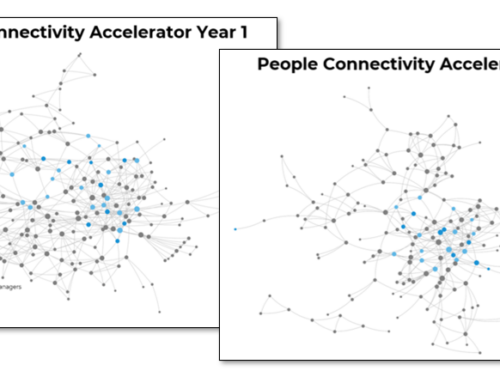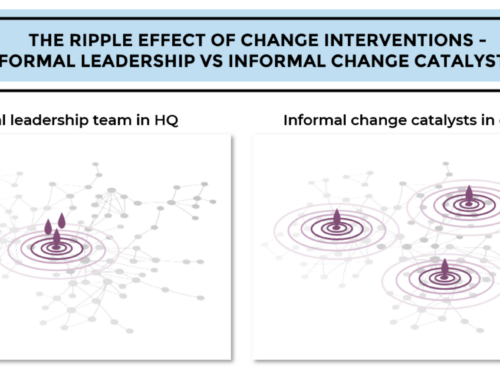BUILD CULTURE
5 Steps To Embrace DE&I In The Workplace
November 9th, 2022 | Build Culture

Getting serious about improving diversity, equity, and inclusion (DE&I) in the workplace may feel important, promising, and daunting all at once. While it does take commitment, effort, and attention to get it right, it is not rocket science. It’s about putting the human experience at the center and advancing with awareness, humility, and data. Here are 5 steps to get you on the right track.
STEP 1: COMMIT
Just like with any change initiative, genuine leadership commitment is a pre-condition for progress. Leaders need to be vocal about their DE&I commitment and voice it internally as well as externally. They should act as role models by leading with empathy and transparency. Sharing personal stories is a great way to demonstrate humility. Sufficient resources must also be committed to giving weight to the DE&I agenda and to Employee Resource Groups. This includes time resources, where leaders make themselves available to listen and engage with employees, human resources that are given the mandate to make decisions that promote DE&I, and financial resources to implement needed initiatives and changes.
STEP 2: ESTABLISH A BASELINE
Ask the people for their input to take stock of how your organization is doing. Establish a baseline by collecting data on the right metrics. Measure Diversity by collecting data on demographics and identities, identifying ratios and representation across hierarchies. Equity is measured by collecting data on people’s experiences, access to opportunities, and outcomes of policies and processes. It includes metrics such as feeling respected and valued, having equal access to learning and career opportunities, and benefitting fairly from rewards and compensations. Inclusion and belonging must be measured by mapping the informal networks and how biases play out in people’s interactions. In all aspects of the analysis, pay attention to intersectionality.
STEP 3: LISTEN
DE&I is about people’s lived experiences. Promote an open and inclusive culture by providing training for everyone to facilitate understanding. Consider training that goes beyond basic DE&I by digging deeper into, for instance, how to check and map one’s privilege and how to develop one’s empathy skills. Create a safe space to share stories, questions, suggestions, and grievances. This includes the establishment and empowerment of Employee Resource Groups (ERGs). Ignite discussions based on the results of the baseline. Talk about biases and how to break them, for instance by using Lean In’s free toolkit with practical examples and situations.
STEP 4: TAKE ACTION
Based on people’s input in steps 2 and 3, prioritize issues that are most urgent to address and make a concrete and practical action plan. The action plan should cover the updated needs for organizational processes such as recruitment, promotion, and retention. It should also cover workplace policies such as those on salaries and benefits, work-life balance, and health and well-being. Additionally, the action plan should include a review of practices such as communication, learning & development, and performance reviews. Be transparent about what you are trying to achieve, as well as what the wins, challenges, and next steps are along the road.
STEP 5: TRACK PROGRESS OFTEN
To ensure accountability in terms of progress and impact of the action plan, you need to follow up on the baseline, regularly and often. Update the established metrics, check in with the Employee Resource Groups (ERGs), and reflect on and record achievements and lessons learned. What has worked so far, and what has not? DE&I is a journey, not a destination. This means that leadership commitment must be reinforced continuously, new data and input must be collected regularly, and the action plan needs to be recalibrated constantly. The goal is for DE&I to be integrated into the daily operations and decision-making, just like any other part of the organization’s strategy.
BUILD CULTURE
5 Steps to Embrace DE&I In The Workplace
November 9th, 2022 | Build Culture

Getting serious about improving diversity, equity, and inclusion (DE&I) in the workplace may feel important, promising, and daunting all at once. While it does take commitment, effort, and attention to get it right, it is not rocket science. It’s about putting the human experience at the center and advancing with awareness, humility, and data. Here are 5 steps to get you on the right track.
STEP 1: COMMIT
Just like with any change initiative, genuine leadership commitment is a pre-condition for progress. Leaders need to be vocal about their DE&I commitment and voice it internally as well as externally. They should act as role models by leading with empathy and transparency. Sharing personal stories is a great way to demonstrate humility. Sufficient resources must also be committed to giving weight to the DE&I agenda and to Employee Resource Groups. This includes time resources, where leaders make themselves available to listen and engage with employees, human resources that are given the mandate to make decisions that promote DE&I, and financial resources to implement needed initiatives and changes.
STEP 2: ESTABLISH A BASELINE
Ask the people for their input to take stock of how your organization is doing. Establish a baseline by collecting data on the right metrics. Measure Diversity by collecting data on demographics and identities, identifying ratios and representation across hierarchies. Equity is measured by collecting data on people’s experiences, access to opportunities, and outcomes of policies and processes. It includes metrics such as feeling respected and valued, having equal access to learning and career opportunities, and benefitting fairly from rewards and compensations. Inclusion and belonging must be measured by mapping the informal networks and how biases play out in people’s interactions. In all aspects of the analysis, pay attention to intersectionality.
STEP 3: LISTEN
DE&I is about people’s lived experiences. Promote an open and inclusive culture by providing training for everyone to facilitate understanding. Consider training that goes beyond basic DE&I by digging deeper into, for instance, how to check and map one’s privilege and how to develop one’s empathy skills. Create a safe space to share stories, questions, suggestions, and grievances. This includes the establishment and empowerment of Employee Resource Groups (ERG)s. Ignite discussions based on the results of the baseline. Talk about biases and how to break them, for instance by using Lean In’s free toolkit with practical examples and situations.
STEP 4: TAKE ACTION
Based on people’s input in steps 2 and 3, prioritize issues that are most urgent to address and make a concrete and practical action plan. The action plan should cover the updated needs for organizational processes such as recruitment, promotion, and retention. It should also cover workplace policies such as those on salaries and benefits, work-life balance, and health and well-being. Additionally, the action plan should include a review of practices such as communication, learning & development, and performance reviews. Be transparent about what you are trying to achieve, as well as what the wins, challenges, and next steps are along the road.
STEP 5: TRACK PROGRESS OFTEN
To ensure accountability in terms of progress and impact of the action plan, you need to follow up on the baseline, regularly and often. Update the established metrics, check in with the Employee Resource Groups (ERGs), and reflect on and record achievements and lessons learned. What has worked so far, and what has not? DE&I is a journey, not a destination. This means that leadership commitment must be reinforced continuously, new data and input must be collected regularly, and the action plan needs to be recalibrated constantly. The goal is for DE&I to be integrated into the daily operations and decision-making, just like any other part of the organization’s strategy.
Related articles
Share article
Share article










